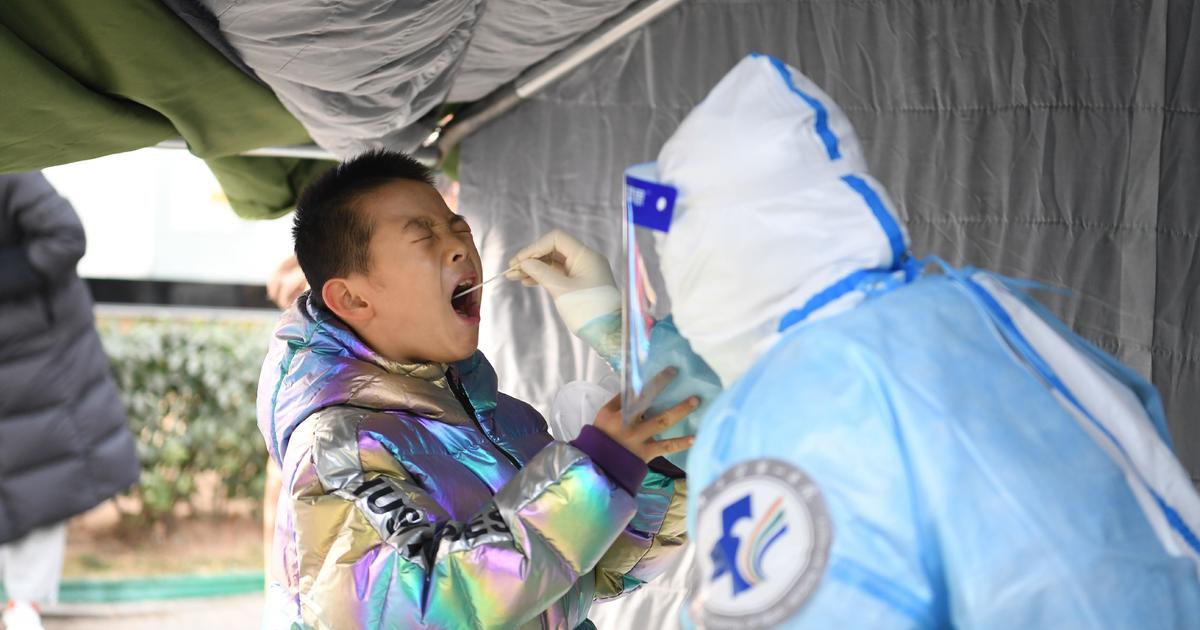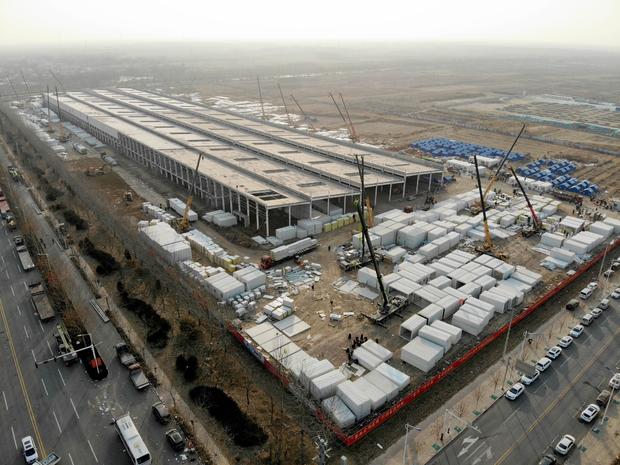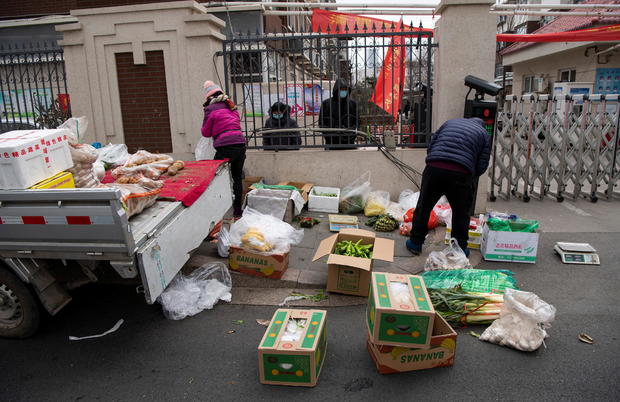
Beijing – China is rushing to build a massive quarantine camp with more than 4,000 isolation suites in Hebei Province, a region just outside Beijing in the center of a reviving coronavirus epidemic. Ahead of a holiday that normally spawns the largest mass movement of people on Earth, authorities have strictly locked tens of millions of people in an effort to stop the spread of COVID-19 a year after it first surfaced.
The new isolation center covers more than 108 hectares on the outskirts of Shijiazhuang City, the provincial capital of Hebei Province, which surrounds Beijing. It will temporarily house close contacts and secondary contacts of confirmed COVID-19 patients so they can be kept under medical observation for signs of infection.
A time-lapse video broadcast by state broadcaster CCTV shows construction crews working around the clock to build the massive facility.
Xinhua / Getty
“More than 4,000 construction workers worked non-stop for six days and nights” to complete the first batch of 606 rooms, and another 1,173 were expected to be ready Wednesday, according to Shijiazhuang Deputy Mayor Meng Xianghong.
Each room in the quarantine center is approximately 60 square feet in size and will have an en-suite bathroom, 5G WiFi and a television, along with desks, chairs and beds, according to state media.
The scenes of the emergency construction project in Shijiazhuang reminded many Chinese of Beijing’s attempts a year ago to build makeshift hospitals in the central city of Wuhan, where the first COVID-19 cases emerged. Two hospitals were built from scratch in just 12 days.
Xinhua / Zhu Xudong / Getty
But Hebei province is now the epicenter of the coronavirus resurgence in China. There have been more than 800 locally transmitted cases since COVID-19 infections started to rise again in the country in early January. More than 90% of those new cases have been counted in Shijiazhuang.
While the numbers pale in comparison to outbreaks plaguing the US, Britain and other hard-hit countries, China had emerged almost completely from the pandemic a few weeks ago, and it is taking an aggressive approach to curb the new infections.
Shijiazhuang began a third round of mass testing on Wednesday, with the goal of screening all 11 million residents for COVID-19 within three days. In the meantime, the city has been closed off, with the order to stay at home with a few exceptions.
Chinese Deputy Prime Minister Sun Chunlan visited Hebei Province this week and toured Shijiazhuang, where she pushed for swift and determined action to stop the spread of the disease. She called on Hebei regional authorities to learn lessons, and specifically to suspend religious gatherings blamed for fueling the current spread of the virus.
Health officials in Beijing, meanwhile, have confirmed that two cases are highly transmissible COVID-19 variant first discovered in the UK were discovered in the capital this week. And on Thursday, the first locally transmitted coronavirus case in two months was confirmed in Shanghai’s financial hub.
The Hebei outbreak and cases emerging elsewhere have put the Chinese government on edge in the run-up to the Lunar New Year, which hundreds of millions of people travel across the country to be with family. The two-week holiday period starts in the second week of February.
Tens of millions of people in Hebei, Jilin and Heilongjiang provinces are under strict lockdown restrictions, including about 20,000 people who moved from villages outside of Shijiangzhuang to centralized quarantine centers last week.
STRINGER / Reuters
Officials are urging people to avoid travel during this Lunar New Year holiday. Anyone wishing to return to a rural area from a Chinese city must show a negative COVID-19 test result within seven days of their trip, the National Health Commission said Wednesday. Most of the 280 million Chinese rural workers would normally go to their villages for the New Year holidays.
Beijing officials have also said they will extend the mandatory observation period for incoming international travelers to the capital to 28 days, to help prevent the importation of new COVID-19 cases, especially of the troubling new variants that are spreading elsewhere.
China has also stepped up its vaccination program, with more than 15 million doses distributed as of Wednesday.


